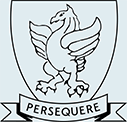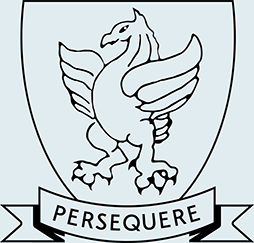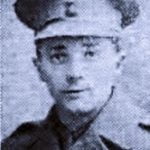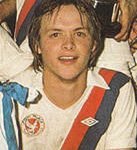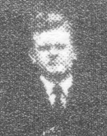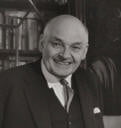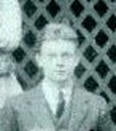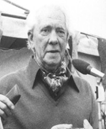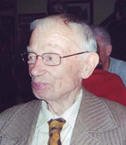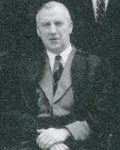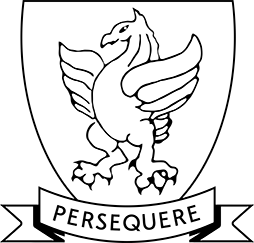This page covers death notices, funeral arrangements and obituaries. Names are in alphabetical order by surname. If anyone spots a mistake please click here to let us know.
It is with great sadness that I have to advise you of Peter Andes’ passing on Tuesday 8th August 2017. He passed away peacefully in his sleep at Princess Alexandra Hospital in Harlow with all his family by his side.
Peter Andes (Holloway School 1947 to 1953) was our Vice Chairman. Peter was such a wise man who never seemed to mind sharing his knowledge with anyone who asked for advice. He was a true friend and stalwart supporter of the OCC and he will be sadly missed!
His funeral is to be held on Tuesday 22nd August at 11.00am at St Mary’s Church, Little Hallingbury, Essex, CM22 7RE with a reception afterwards at Coho Restaurant, Old Road, Old Harlow, Essex CM17 0HA. Instead of flowers at the funeral we are asking for donations for the Harvey Ward Trust Fund to buy some much needed new furniture and equipment for the relatives room to help make the darkest days a little brighter for families & patients alike. Donations can be made at the funeral or cheques made payable to ‘Laura Andes’, and sent to 4 The Hall Barns, Bentfield Road, Stansted, Essex, CM24 8JW. Alternatively, there is a just giving page: www.justgiving.com/crowdfunding/peter-andes
David Brynmor Anthony (also known as D. Brynmor Anthony) was born 28 October 1886 at Kidwelly, Carmarthenshire, the second son of John Gwendraeth Anthony and Mary, his wife. The father was a provision merchant, general draper and outfitter at Paris House, Kidwelly. David Brynmor attended the local Castle School before going to the county intermediate school at Llanelli. Entering University College Wales, Aberystwyth in October 1905 he graduated in 1908 with a class I in French and Romance philology, his studies including also history and Latin. From October 1908 until January 1910 he taught at the Collège de Garçons, Cambrai, France, but with the help of a University of Wales postgraduate studentship he was able to leave his post and continue his studies at the Sorbonne and the Bibliothèque Nationale.
In June 1910 he was awarded the degree of M.A. by the University of Wales for a dissertation on the poetry of the Parnassian group of French poets. In January 1911 he was appointed to teach French at Holloway County High School in London. He enlisted in the Royal Welch Fusiliers in September 1914 and served overseas from November 1915 to the end of January 1919, at first in Belgium and France, and later in Italy. He rose to the rank of captain, and for his services was awarded 2 Military Crosses and bar for his service, the Italian silver medal for valour, and the Croce di Guerra. The second Military Cross was awarded “for conspicuous gallantry and devotion to duty in directing and leading a raid. When seen by the enemy he at once gave word to charge, and led the way over the wire himself, killing two of the enemy. He did three daylight patrols, in two of which he fought and beat off ten or fifteen of the enemy, and gained the necessary information.
He has shown the greatest courage and skill.” At the end of the hostilities he was appointed to organise educational schemes for the troops in northern Italy, his continued stay in the country enabling him to learn Italian with great proficiency. He later (in 1920) qualified for a diploma in Italian awarded by the University of Florence. He returned in 1919 to Holloway School and in February 1921 was appointed registrar of the University of Wales. In addition to the usual duties of the registrarship he became in 1931 acting secretary of the Welsh National School of Medicine, pending the appointment of a fulltime secretary. His duty as secretary of the art committee of the University gave him an opportunity to arouse and cultivate a greater awareness and appreciation of art in Wales. He became secretary and later chairman of the Contemporary Art Society for Wales and art remained a passion for him. He never lost his interest in France and in modern languages. He served as honorary treasurer of the Modern Language Association, as a member of its council, and as president of the South Wales branch. In 1936 he was nominated Officier d’Académie by the French government.
During the years 1939-45 he was chairman of an organisation set up in Cardiff called Friends of Free France, and for services to the Free French Forces he was awarded, in 1947, the Médaille de Vermeil de la Reconnaissance Française by the French government. In 1964 he was promoted to the rank of Officier de l’Ordre des Palmes Académiques for services to France and French culture. He resigned from the post of university registrar in 1945 and soon afterwards, in February 1946, he was appointed chief inspector of the Central Welsh Board. The C.W.B. was merged into the new structure when the Welsh Joint Education Committee came into being and he transferred to the W.J.E.C. and continued with it up to his retirement.
His wife was Doris Musson, youngest daughter of George Tait Galloway Musson and his wife of Liverpool. They were married on 24 April 1918. There were two children, David Alan, and Lois Mary. He was made a freeman of the borough of Kidwelly in July 1924. He was an elder of Pembroke Terrace Presb. church, Cardiff, and was a member of the board of the Forward Movement of the Presbyterian Church of Wales. He believed firmly in the value of physical activity; he took his walks seriously and played golf regularly as a member of the Radyr Golf Club. During World War II he began to keep bees and came to have a large number of hives and to produce great quantities of honey. It is worth recording this personal detail for it symbolises his seriousness and industriousness — or better still, his ‘busy-ness’. He died on 24th January 1966
Edwin Ardener was a British social anthropologist and academic. He was also noted for his contributions to the study of history. Within anthropology, some of his most important contributions were to the study of gender, as in his 1975 work in which he described women as “muted” in social discourse.
Born 21 September 1927 his adolescence was spent in wartime London. After attending Holloway School, in 1945 he went to LSE to study anthropology and psychology. He was, beginning in 1945 at the age of eighteen, one of the very youngest of the post-war recruitment to the anthropological profession. Many of his colleagues were some years older, having had their training postponed or interrupted by the war.
After graduating in 1948, Edwin went to Nigeria, thus beginning a lifelong involvement with West Africa. He spent two and a half years carrying out fieldwork in Nigeria. Following this, in 1952, he became a research fellow (later senior research fellow) of the West African (later Nigerian) Institute of Social and Economic Research. This appointment took him to Cameroon, where he spent nearly all of the next eleven years. He was involved in a variety of research projects, which often reflected concerns of government and administration, and had strong empirical and demographic components. Much of this work he carried out in collaboration with other anthropologists, particularly with his wife Shirley. From this work, a variety of reports and publications appeared, prominent among them being Plantation and Village Life in the Cameroons (1960), written with Shirley
In 1960 Edwin Ardener was appointed to an Oppenheimer Studentship, attached to Queen Elizabeth House at Oxford, and was invited by Professor Evans-Pritchard and his colleagues to join the Institute of Social Anthropology.
In 1963 he was appointed to a University Lectureship in Social Anthropology. Although Edwin continued to maintain his personal and academic links with Africa and African studies, his interests and inspiration became increasingly focused on regions closer to home and he was responsible for a distinguished group of students turning their attention to areas of north-western Europe. He introduced into social anthropology the findings and methods of a variety of neighbouring disciplines, in particular those of demography, history, linguistics, genetics and animal ethology. Much of his own later work was directed towards the derivation of an empirical approach in which full account could be taken of the semantic as well as the statistical nature of the social world. He fostered academic and personal links and exchanges with Eastern Europe and I know how greatly he valued the opportunities to visit Eastern Europe, particularly his invitation to Poland in 1984 for the Malinowski Centennial Symposium.
With his wife Shirley, he introduced into social anthropology a concern with cross-cultural research on women. The results of this work provide one example among many of the fruits of their academic partnership, expressed in joint scholarship and in the inspiration that has resulted from their joint teaching. Many professional organizations and scholarly bodies benefited from Edwin’s energy and farsightedness. He was chairman of the Association of Social Anthropologists of the Commonwealth from 1981 to 1985.
His teaching insisted on intellectual rigour and professionalism. To the newcomer his remarks in tutorials and discussion often seemed perplexing, even impenetrable, but in many students, particularly the best, he awakened a fascination with the discipline of social anthropology and made Human Sciences an important introduction to graduate studies in anthropology. He saw Human Sciences as a major focus for the different interests of social, cultural and biological anthropologists and he took particular pride to the value the University attaches to inter-disciplinary activity,
Edwin was elected to a Fellowship at St John’s in 1969 and began an association which he deeply valued and to which he and Shirley contributed greatly. Edwin was a marvellous college man -to any social gathering he brought a mixture of wit and erudition few could match. At college meetings his interventions were not frequent. When they were made they were courteous but trenchant. They combined a use of metaphor and an obliqueness which made them all the more memorable and effective.
In addition to his participation in academic life and scholarship, Edwin always maintained his links with the wider community in which he lived. His home in Jericho, Oxford became a focus for support and action directed towards the needs of the community. Edwin was at once a well-loved member, in the fullest sense, of the community in which he lived, and a natural champion of local needs. He believed in anticipation rather than reaction, an approach which made him for many years a most effective Chairman of the Jericho Residents’ Association. He was able both to communicate with the less articulate of his constituents and to deal effectively with the professional bureaucracy of town planners, often less conscious than he of the strength and feeling of local communities, and the need to support and preserve them.
Edwin died in 1987 just before the age of 60 years. Although his scholarship made his name in the world of academia he put it to the direct benefit of those he lived among. RH
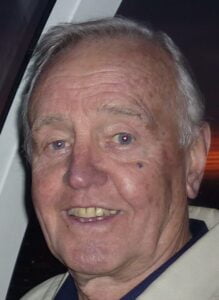
It is with great sadness that I have to advise you of Fred Averill’s passing on Friday 4th February 2022, aged 86.
Fred Averill was born on 17th April 1935 and went to Holloway School (1946 to 1951). George Ives recalls that during WWII Fred’s father was killed by shrapnel and found by his own father who arranged Fred’s apprenticeship with OTIS, the lift company. Many years later Fred, an excellent engineer, would start his own lift company. Fred was a stalwart supporter of the OCC and he will be sadly missed! Our thoughts and condolences go to his wife Anne, daughter Beverley, son Paul, grand daughter Jessica and family.
A celebration for the life of Fred Averill was held on Monday 21st February, at 2.00pm, at Woolensbrook Crematorium, Hertford Road, Hoddesdon, EN11 9BN. Many Old Camdenians including Jed and Ann French; Brian Collins; Patrick Jones; Bob Pearson; Peter Sumpter and Dr Ray Rowe joined Anne, Beverley, Paul, Jessica, family and friends in celebrating Fred’s life and legacy.
At the reception at the Hall, Greenfields, South Drive, Cuffley, EN6 4HW, Dr Ray Rowe read out the following emails from OCs who could not make it:-
Alan Meyer:
Fred joined the Football Club in 1953, starting in the 5th XI, but progressing, steadily, through the elevens to establish a place in the 1st XI during the 1955/56 season. Thereafter, he was a permanent fixture at right back, where his hard tackling, and skillful play, helped provide a strong defensive base for the team’s glory years in the 1960s. A virtual ever present, he was bitterly disappointed at having to miss the AFA Senior Cup Final in 1963/64 through an eye injury, when the 1st XI became the Old Boys League side to lift that trophy. Fred’s sporting talents were soon recognised by the Cricket Club as well. These included a dogged defence, but, coupled with, a fearsome off drive, plus the ability to bowl tidy spells of right arm off breaks when needed. He, therefore, became a more than useful, middle order, allrounder, and, joined an elite band of OCCC members who had scored over 1000 runs, and, taken more than 100 wickets in their time with the club.
Fred was an amiable character, although never afraid to speak his mind. Always good company, and, with his dry sense of humour, thoroughly enjoyed the camaraderie at social occasions such as the Club’s reunion dinners. He will be much missed, and, long remembered, by all who knew him.
Our thoughts are with Anne and the family at this difficult time.
Alan Shearn:
In the 1960`s the team was being built and it seemed like a wise tactic to focus on stopping the opposition from scoring. In this way we were at least assured of a draw. With a little bit of time, training, and some new blood, we started to score goals and win. Fred was one of the white line of “you shall not pass” defenders being the platform from which the great results of the next few seasons were born.
We used to meet at some key Tube station being mainly Turnpike Lane or The Archway. The older players had cars and the unwritten arrangement was that they would provide a lift to all those who had no vehicles themselves.
Some even had company cars that were quite smart and were the first to fill up. I recall that Fred had a small uninviting vehicle of some kind that he kindly made available to the team. I can remember joining him on a few occasions and can so clearly recollect the conversations we had about motor cars and how they worked. He tried to explain the internal combustion engine and the manner in which this energy was transferred via gears, clutch and things to turn the wheels and thus move forward.
We remember people both on and off the field. But we do remember.
John Fitzgerald:
My dad played in the same Sunday team (Finsbury Rangers) as Fred when the latter was a youngster and my dad was the elder statesman. They had a good side then and the old man said Freddie was a decent player! My parents are both still alive (93 & 89) so if you are able, could you pass on our condolences to Beverly and the family from John, Aileen, John & Paul Fitzgerald.
Brian Turner: Fred and Ann were part of a group of our friends that enjoyed a party after football on a Saturday. The group consisted of Brian Oldrey ,Mick Robinson, George Palmer, Phil Cowley, Ray Edwards, Jed French, Derrick Haines , Bill Rogers and partners plus a few others.
Robert Cairns: Fred was an excellent footballer and cricketer. Someone to look up to.
Marta Monteiro – Ambassador for the ‘Bill & Nora Wraight Old Camdenians Memorial Fund’:
It is very sad news indeed, may his soul forever rest in peace. Please send my condolences to Mr. Averill’s family. Thanks
George Ives Fred was a stalwart supporter of the OCC
Ron Poole At school with Fred
Jim Gardener who organised Fred’s funeral has fond memories of Fred over their 50 year friendship. Also, it was Jim who organised that the OCC Badge on a white background was affixed to Fred’s coffin – thanks too to Qwerty IT Services Ltd.
Fred was diagnosed with dementia in 2014; the family are asking for donations for Dementia UK (https://www.dementiauk.org/).
Dr Ray Rowe
Former members of the Old Camdenians Dramatic Society (School years 1928 -34) will be particularly saddened to learn that Roy Beckwith died peacefully in hospital on 1st May 2008. Roy was a prominent member of the post war Old Camdenians Dramatic Society, along with Sydney Hutchison, Dennis Steel, Len Renton, Ken Page, Bill Chittleborough, Harold Martin, Charles Simpson, Ned Kelly, Peter Clayton, Richard Brown and others. The Society performed many plays on the stage of the Old Hall, now the Seitz Camdenian Hall. Roy was a pharmacist and managed the Boots branch at Kentish Town. Roy married Audrey in 1959 and subsequently moved to Huntingdon in 1974 where they started a theatre group. He continued his amateur acting and directing roles until quite recently. He was a straight actor, among his key roles were as the father in “The Heiress” and as a taciturn detective inspector in “Dial ‘M’ for Murder”. One of his comedy roles was as the majestic bishop in “See How They Run”. We send our condolences to Audrey and his family. RB
We learnt only recently, and with very great sadness, that Dickie Bird had passed away in August 2007, aged 90.
He was a stalwart of the Club and, for many years, served on the Committee, and as both Secretary and Chairman, commanding great respect with his quiet, unassuming efficiency and dry sense of humour. These qualities, no doubt, stood him in good stead during a distinguished civil service career, in which he rose through the ranks to become Secretary to the Agricultural Research Council and was awarded the OBE.
Dickie also played football for the Old Camdenians and, in the 1950s, captained a side of similarly wholehearted characters which included Syd Carter, Johnny Castle and Tony Leonard.
He was one of the first to welcome a certain ginger haired schoolboy to the OCFC and what better introduction could this youngster have had. Under Dickie’s leadership, the team adopted a ‘they shall not pass’ approach but coupled with an innate sense of fair play and enjoyment. I quickly learnt that enthusiasm and commitment more than made up for a lack of the finer skills and that team spirit was paramount. Dickie’s friendly nature and wise council will long be remembered.
Norman Charles Blamey OBE RA was an English painter, noted latterly for his portraits and depictions of Church ritual.
Norman, who died aged 85, was a consummate draughtsman specialising in contemplative domestic subjects and episodes from the liturgy of the Anglo-Catholic church. His paintings have only recently been given due recognition, for both his subject and his style were unusual, but he brought to his work an intensity that expresses not only the spirituality of high Anglicans but of all who value ritual.
The setting of his religious pieces was usually Old St Pancras Church, London, where he worshipped all his life, and his pictures sometimes show him as an assistant in the ritual. In his work, the sense of the spiritual was translated into a crystalline geometry, worked out with a fascination for mathematics worthy of the early renaissance masters. Space is telescoped, manipulated to form tightly-knit compositions in which the human figure creates powerful patterns. The depictions of ritual make telling use of this device, with lines of repeated cassocks and copes building up magnificent counterpoint, while dull tertiary colours, with greys and whites, supply a rich, subdued harmony.
Norman was born in St Pancras on December 16th 1914, the only son of a manufacturing chemist and his wife. He was educated at Holloway School and then at the Regent Street Polytechnic School of Art (1931–1937). He went on to teach at the Polytechnic – interrupted by military service during World War II – moving to the Chelsea School of Art (now the Chelsea College of Art & Design) in 1963. He first showed at the Royal Academy in 1938, and continued to do so for 50 years. His war was spent with the army in Egypt, Palestine and the Lebanon, where, in hospital, he made a series of fine drawings of his fellow patients.
After the war, Norman returned to the Regent Street Polytechnic, and, in the 1950s, began to produce the sequence of paintings of ritual that forms the backbone of his output. In 1956, he was commissioned to decorate the apse of St Luke’s church, Leagrave, Luton; the result, the imposing Christ In His Glory, reflects Byzantine stylisation.
In it, Norman adopted pronounced distortions of the figure in this decade, devices which he was later to regard as unsatisfactory, mere lip-service to modernism. They are often, nevertheless, powerfully effective, and betray the great impression made on him by Stanley Spencer’s work, notably at Burghclere Chapel, and by van Eyck’s Ghent Altarpiece, which he first saw as a 19-year-old in 1933.
Another mural, for the Lutheran church of St Andrew, Ruislip Manor, was executed in 1964. Norman’s career saw the steady elimination of mannerisms, until, by the 1970s, he was painting with a realistic directness strengthened by his unfailing dedication to pictorial geometry. This is embodied in the paint itself, applied with a palette knife, often guided by the straight edge of masking tape. (He is said to have used the same palette knife for some 40 years.)
These technical comments apply as much to his domestic subjects as to his ecclesiastical ones. Enclosed spaces are defined and amplified by mirrors, reflections rendered ambiguous by the presence of the miscellanea of an artist’s collecting – fossils, flints, small sculptures, postcards. His models are usually Margaret, his wife, whom he married in 1948, and his son, Stephen, who became a philosopher and logician.
Norman was a very private man, and his pictures reflect that. When he painted himself, it was usually to make a pictorial statement about the artist’s viewpoint, rather than to record a personality in which he took interest. But he painted fine portraits, too, the work of an incisive and humane mind.
He continued to teach at Chelsea School of Art, where he was senior lecturer from 1963-79, and, after his election as a royal academician in 1975, as visiting lecturer at the RA schools. He believed passionately in the traditional disciplines of the draughtsman, but was too retiring to pronounce on them, and taught by example, making drawings himself to show how he thought things should be done.
His gentle reserve and modesty were commensurate with the concentrated power of his painting. He did not expect success; indeed when he was invited to a celebratory lunch on his 80th birthday at the Tate Gallery, which had acquired several of his works, he remarked: “I had to keep pinching myself to make sure I wasn’t dreaming.” A one-man show was organised by Lynda Checketts for the Norwich Gallery in 1992; it travelled to the Victoria Art Gallery, Bath, and the Fine Art Society, London. He was awarded the OBE in 1998.
Norman’s wife Margaret died in 1989 and he died on 17 January 2000. RH
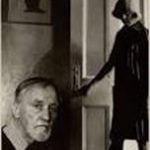
Tribute by his daughter, Mrs Josephine Wright
Charles died on 17th July 2000, aged 91.
He was an architect and after the war he worked in Plymouth and in Coventry in the City Council’s Architect Department helping to rebuild them. He came to Coventry in 1950. In the 40’s and 50’s he designed schools and later went on to public buildings. He designed his own bungalow in 1965, which he lived in until he went into hospital. He retired in 1974. He was also active in local politics and after his retirement in the Pensioners organisations. After my mother died in 1991, he began to travel and visited many of the countries he had always wanted to see.
Last year he attended the Old Camdenians Annual Dinner for the first time. I believe he was the oldest there. he very much enjoyed it and would probably have attended again this year.
Steve Brennan was born on 3rd September 1958 and attended Holloway School. He was a very talented footballer representing Islington schools and left school to begin his youth career at Crystal Palace where he was part of the successful youth squad which won the FA Youth Cup in 1977.
He signed professional terms in February 1976 and made his senior debut on 31 August 1976, in an away 1–3 defeat to Watford in the League Cup. His first league appearance was on 2 March 1977, in an away 2–3 defeat to Lincoln City, when he scored one of Palace’s goals. Steve made only one further appearance that season and one in 1977–8 before signing for Plymouth Argyle on 1 August 1978. At Plymouth, he made only six appearances and moved to Leatherhead 1979.
Steve was extremely well liked and our sincere condolences go to Steve’s loving family at their sad loss. Steve died on the 13th of August 2015, aged 56. RH
Ernie was a regular correspondent during his retirement. He always wrote of the happy times he had at Holloway and how much he enjoyed the school, it’s activities and the happy, helpful Common Room, which, he said was ‘babbling with talent’.
Ernie always mentioned school camp – specially at Corfe Castle with Alf Goldsmith, Allen Brockman, etc. he so enjoyed the cycling tours with Gordon Clarke, who Ernie described as ‘a wonderful friend and colleague’.
Violet has written to me saying how pleased she was that Ernie survived to celebrate their diamond wedding anniversary and how she appreciated those who attended Ernie’s thanksgiving service.
It was with very great sadness that we heard, not only of Cliff’s passing on 8th July 2010, but also that his wife, Pat, had died just a few weeks earlier.
After leaving school at sixteen, Cliff joined a shipping company as a junior clerk and rose rapidly through the ranks to become Managing Director. He was a talented footballer and, in his first season with OCFC (1958/59), helped the 3rd XI win the LOB Minor Cup – the Club’s first trophy. He subsequently went on to play, briefly, for Alec Godfrey’s 1st XI and remained a lifelong Arsenal supporter. Until illness intervened, Cliff was a regular attendee at the Annual Dinner, which he greatly enjoyed. His speech, in 1993, proposing the toast to the School and staff, is still remembered as one of the best heard at those functions.
Cliff’s cheerful, down to earth nature will be greatly missed by his many friends as witnessed by the large gathering at his funeral and, afterwards, at the Redlibbets Golf Club, near Sevenoaks. The Club was represented by the Chairman, the Secretary and Pam Ives, Phil Cowley, Bill Rogers and George Palmer. Our sincere condolences have gone to Cliff’s loving family at their doubly sad loss. A further tribute follows.
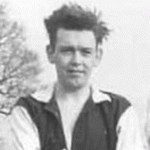
Allen Brockman was a talented and caring career teacher who rose to the rank of Captain in the Royal Artillery and served in India and the Far East. On leaving the army at the end of the war, Allen gained a degree in physics and mathematics at London University.
He taught physics at Holloway during the 1950’s. His school camps were enjoyed by many boys and on the football field his rock solid centre half displays helped the defences of many of our Old Boys teams. Allen had been a pupil at Sir George Monoux School Walthamstow and after leaving Holloway and several promotions later became Headmaster of that School – a post he held with distinction from 1971-84. Such was his impact as Headmaster that a recently opened building at the (now) Sixth Form College has been named after him.
In his retirement Allen was appointed a JP and Chairman of the bench. He was truly a brilliant teacher, quiet and unassuming with a strong sense of duty and fairness. He also possessed a good humour and was fun to be with. He died in hospital in 2002 after a long illness. Our sympathy and condolences go to his widow, Irene, who always supported him.
It is with much sadness that we record the passing of Maxim Bruckheimer, who passed away on the 16th April 2020, at the age of 84.
Maxim came to the UK as a child when his parents had to leave Germany because of Nazi persecution. He attended Holloway School in the late 1940’s and early 1950’s becoming a prefect, and where he excelled in mathematics.
He received his B.A. in Mathematics in 1957 and Ph.D. (in differential geometry) in 1960 from Southampton University. Maxim had established a close relationship with Donald Mansfield, the Head of Maths at Holloway and they co-authored a number of books for students and teachers in the 1960s and 70s.
After lecturing in mathematics at the City University, in 1969 Maxim became one of the founders of the Open University. He was appointed Dean and Director of Studies of the Mathematics Faculty. He was responsible for the first multimedia courses that gave the university a worldwide reputation.
In 1974 he emigrated to Israel to help set up the Everyman University which was modelled on the Open University and was later renamed the Open University of Israel. He was appointed their first Director of Studies.
In 1986, he was appointed Professor of Mathematics Education, Head of the Department of Science Teaching, and the Mathematics Group at the Weizmann Institute of Science in Rehovot, where he worked until his retirement in 2000. Maxim led many research and development projects in mathematics education and always with his characteristic academic excellence and towards an impact on the educational system for the benefit of all students and their teachers. He authored and co-authored tens of scholarly articles in many research and teacher journals.
Maxim’s academic legacy is alive as the research and development projects at the Department of Science Teaching are based on the philosophy he designed as a guideline for work – developing up-to-date and research-based rich learning and teaching materials and learning environments, implementing and evaluating them in iterative cycles, all in full coordination with the Israeli education system and in collaboration with research scientists of the Weizmann Institute.
After retiring, Maxim devoted his life to charity and to his large family: five children, plenty of grandchildren and great-grandchildren.
RH
Sir Arthur Wynne Morgan Bryant, CH, CBE was an English historian, columnist for The Illustrated London News and man of affairs. His books included studies of Samuel Pepys, accounts of English eighteenth- and nineteenth-century history, and a life of George V. He moved in high government circles, where his works were influential, being the favourite historian of three prime ministers: Winston Churchill, Clement Atlee and Harold Wilson…
Bryant’s historiography was often based on an English romantic exceptionalism drawn from his nostalgia for an idealised agrarian past. He hated modern commercial and financial capitalism, he emphasised duty over rights, and he equated democracy with the consent of “fools” and “knaves”.
Arthur Bryant was born on 18 February 1899, the son of Sir Francis Morgan Bryant, who was the chief clerk to the Prince of Wales, and wife Margaret (May) née Edmunds. His father would later hold a number of offices in the royal secretariat, eventually becoming registrar of the Royal Victorian Order. Arthur grew up in a house bordering the Buckingham Palace Gardens near the Royal Mews. There he developed a feel for the trappings of traditional British protocol and a strong attachment to the history of England.
He attended school at Pelham House, Sandgate, and Harrow School where his younger brother the Rev. Philip Henry Bryant later became an assistant Master. Though he expected to join the British Army, he won in 1916 a scholarship to Pembroke College, Cambridge. Despite that, he joined the Royal Flying Corps the following year, as a pilot officer. While there, he served in the first squadron to bomb the towns of the Rhineland during World War 1. He was also for a time the only British subject formally attached to the United States’ Expeditionary Force’s Air Service, to one of its detachments that had arrived in England for training for frontline service.
In 1919 he read Modern History at Queen’s College, Oxford, obtaining distinction in the honours courses offered to ex-servicemen in 1920.
Arthur started work at Holloway School as a history teacher. There he developed strong sense of social justice and became convinced that education would be an effective way of uniting the people. That conviction led him to become a historian. Tall, dark, and attractive, he was popular at the debutante balls he regularly attended, where he often persuaded his dancing partners to help him teach some of the less fortunate children at a children’s library he had established in Charles Dicken’s’s old house in Somers Tow, London.
He became a barrister at the Inner Temple in 1923, but left later that year to take the headmaster position of the Cambridge School of Arts, Crafts, and Technology, becoming the youngest headmaster in England. He organised the Cambridge Pageant in 1924 and the Oxford Pageant in 1926. Altogether, he proved remarkably successful in enrolling students, the school growing from three hundred to two thousand students in his three years there. During 1926 he married Sylvia Mary Shakerley, daughter of Walter Geoffrey Shakerley, the third Baronet Shakerley, and the following year became a lecturer in history for the Oxford University delegacy for extramural studies, a position he retained until 1936. His marriage was dissolved in 1930. He also served as an advisor at the Bonar Law College at Ashridge. His first book, The Spirit of Conservatism, appeared in 1929 and was written with his former students in mind.
In 1929, after cataloguing the Shakerley family library, he was asked by a friend in publishing to produce a new biography of Charles II of England. Yale Professor Frank W. Notestein suggested that he begin the work with Charles’s escape following the Battle of Worcester, incorporating details of his earlier life into the narrative thereafter. This dramatic opening led the Book Society to choose it as their October 1931 selection, and it became a best-seller. Arthur ‘s success with this volume encouraged him, and he remained in that field. The book has been described as being both readable and informed by solid scholarship. He also regularly continued to produce pageants. These included the Wisbech and Hyde Park pageants, and the Naval Night Pageant in Greenwich, which was attended by the King, Queen, Prince of Wales, British Cabinet, and members of the World Economic Conference. For the quality of his work in this field, he was acclaimed “the English Reinhardt”.
He helped found the National Book Association, and its subsidiary, the Right Book Club, as an alternative to the Left Book Club. The new organisation was not outstandingly successful, however, although it did publish several of his own writings.
His next book was a three-volume biography of Samuel Pepys, completed in 1938 and regarded as “one of the great historical biographies in the language” by John Kenyon. Almost three-quarters of a century after its publication it remains an important guide to Pepys’s career.
Arthur also was a frequent contributor to London papers and magazines, and scripted radio broadcasts relating to his historical interests, as well as radio plays for the BBC. He published a collection of scripts in his book The National Character. He was editor of the Ashridge Journal and president of the Ashridge Dining Club.
Unfinished Victory was a book which he had published in January 1940; it dealt with recent German history, and explained sympathetically how Germany had rebuilt herself after World War I. He asserted that certain German Jews had benefited from the economic crises and controlled the national wealth, and although he criticised the destruction of Jewish shops and synagogues. Initially most reviewers received the book positively, but after the ‘phoney war’ ended, public and elite opinion turned sharply against appeasement of any sort. Arthur realised his mistake in proposing a compromise and tried to buy up unsold copies.
After the fall of France in 1940, Arthur’s writing celebrated British patriotism. His English Saga, published at the end of that year, described England as “an island fortress … fighting a war of redemption, not only for Europe but for her own soul”. Roberts says of his popular essays and books, “Bryant did a superb job in helping to stiffen the people’s resolve by putting their sacrifices in historical context.”
He married again, in 1941, to Anne Elaine Brooke, daughter of Bertram Willes Brooke, one of the White Rajahs of Sarawak. His books during this decade dealt less prominently with the 17th century, and included a collection of Neville Chamberlain’s speeches.
His works during this period were well-received for their style and readability, although they also tended to be less well researched, which has caused them to be questioned by younger historians. Several of these works, including English Saga (1940), The Years of Endurance 1793–1802 (1942), and Years of Victory, 1802–1812, drew notable criticism, particularly for his preoccupation with comparing Napoleon and Hilter. The shortcomings of these works, possibly combined with their unusual popularity, helped ensure that he never received the highest academic honours.
His single major work in the decade was a two-volume collection of Alan Brooke, 1st Viscount Alanbrooke’s’s diaries with additional commentary, The Turn of the Tide (1957) and The Triumph in the West (1959). These books created substantial controversy, given their criticism of Churchill, who was then at the height of his popularity. They are still considered essential reading for understanding the British military during the war.
The books he wrote during his later years included several volumes of broad English histories. They include Set in a Silver Sea (1984), Freedom’s Own Island (1986, edited posthumously by John Kenyon, and a third volume. He retained a large readership and was guest-of-honour at the Conservative Monday Club’s’s 1966 annual dinner. He spoke on “The Preservation of our National Character”. The dinner, at the Savoy Hotel, was sold out.
Arthur’s total output was remarkable. He wrote over forty books overall, which collectively sold over two million copies. Also, in collaboration with W.P.Lipscomb, he wrote a play dramatising Pepys’ life, titled: ‘Thank you, Mr. Pepys!’, which ran for one hundred and fifty performances in London. He was a frequent lecturer, speaking at many of the leading cities and schools in Great Britain, as well as in the United States and fourteen European countries. His public speeches included the 1935 Watson Chair lectures sponsored by the Sulgrave Manor Trust. These lectures, on American history, literature, and biography, were later collected into the book The American Ideal.
In 1936, Arthur took over G.K. Chesterton’s “Our Note Book” column for the Illustrated London News. He continued writing this column until his death, which occurred almost half a century after Chesterton’s. Overall, Bryant produced about 2.7 million words for that magazine.
Although professional historians were frequently negative about his best-sellers, Bryant’s histories were explicitly praised by prime ministers Stanley Baldwin, Neville Chamberlain, , Churchill, Attlee, Macmillan, Wilson, James Callaghan and Margaret Thatcher..
During the 1950s Arthur was knighted and made a Companion of Honour in the 1960’s. His second marriage dissolved in 1976. In his final years he lived in Myles Place, Salisbury, Wiltshire.
Arthur died after a brief illness at the age of 85 on 22 January 1985. His body was cremated, with its ashes being entombed in Salisbury Cathedral.
Duncan Lyall Burn economist, was born on 10 August 1902 at Holloway, London, the younger child and younger son of Archibald William Burn, engineer, and his wife, Margaret Anne Mead, who, prior to her marriage, worked as a nanny.
Educated at Holloway County School and Christ’s College, Cambridge University; he became a lecturer in Economic History, at the University of Liverpool in 1925, and Cambridge University in 1927. He worked at the Ministry of Supply (Iron and Steel Control) in 1939 and was a Member of the US-UK Metallurgical Mission, New York and Washington in 1943
He became the leader writer and industrial correspondent for The Times , 1946-1962; member of the Advisory Committee on Census of Production, 1955-1965; member of the Executive Committee, National Institute of Economic and Social Research, 1957-1969; and Director of the Economic Development Office set up by Associated Electrical Industries, English Electric, GEC and Parsons, 1962-1965.
He also served as a Member of the Economic Committee, Department of Scientific and Industrial Research, 1963-1965, worked as a lecturer at Bombay University in 1971 and as a Specialist Advisor, on the House of Commons Select Committee on Energy, 1980-1988. He died in 1988.
Regret to announce the death of Allan Burnett in-2009.
A Memorial Service will be held at Welling Baptist Church, Axminster Crescent, Welling, Kent on Saturday 7th. November 2009 at 2pm. Nearest Rail Station is Bexley Heath, Kent.
Allan (or Bunny to his friends) enjoyed a wide variety of interests, all of which he pursued with great enthusiasm. He grew up in the Tufnell Park area, the eldest of three children and, from an early age, was a keen cyclist, an activity which took him to all parts of the country and abroad. After leaving school, he helped his father with the stage lighting at theatres, including the Finsbury Park Empire, from which sprang his lifelong passion for the theatre and the music hall. He had a particular penchant for the Arts and Crafts Movement and became a guide at William Morris’s Red House. During his civil service career, first as a Customs Officer, then as a VAT inspector, he acquired a comprehensive knowledge of public transport, the River Thames, and London as a whole. In retirement, he trained as a guide at St. Paul’s Cathedral and for the City of London, and delighted in giving illustrated lectures about London and the Thames which were always popular.
For several years, Allan was a regular attendee at the Annual Dinner where he was always good company, with a fund of anecdotes and reminiscences. It was through the Old Camdenians that Allan linked up again with Johnny Castle, his best friend at Burghley Road School and Holloway Grammar, and a former cycling companion.
Allan’s very full life was underpinned by a deep Christian faith and his love for his family. His quirky sense of humour, innate kindness and selfless generosity will be greatly missed by all who knew him.
Alan Meyer
Maurice Burton was a British zoologist and popular science author, who produced many natural history encyclopedias and books including a skeptical treatment of the Loch Ness Monster.
Maurice was born in Hornsey, London on 28 March 1898 and attended Holloway School. He left school to study zoology at King’s College, London under Arthur Dendy. He then became a schoolteacher, before joining the staff of the Natural History Museum in 1926 where he remained for the rest of his career until his retirement in 1958.
He married Margaret Maclean in 1929 and they had two sons and a daughter.
He was Curator of Sponges at the British Museum of Natural History from 1927 to 1948, and Deputy Keeper of Zoology in the same institution from 1949 to 1958. His popular science writing included major work on Encyclopedias, and acting as Science Editor for the Illustrated London News and Nature Correspondent for the Daily Telegraph. In 1961 he published a book called The Elusive Monster reviewing the evidence for the Loch Ness Monster in the light of his professional knowledge and concluding that it was unlikely that such creatures were living in Loch Ness. He also commented further on this topic in the News Scientist.
Many of Maurice’s books were aimed at a juvenile audience. Some of his later books or revised editions were published with his son, Robert Burton (born 1941) who also trained as a zoologist and published many natural history books himself. Robert also took over his father’s Nature Notes column in the Daily Telegraph. His daughter Jane Burton (1933–2007) illustrated many of the books and pursued a career as a wildlife photographer.
Maurice died in Albury, Surrey on the 9th of September 1992.
The Chairman and I attended John’s Funeral in 2009 and I will quote from a Eulogy which was read out because it’s author Alan Burnett (1942-47) who was a great friend of John’s when they were Classmates at Holloway was ill and indisposed.
John who was extremely fond of the outdoors became on leaving School a Shipping Clerk and eventually rose to become a Freight Manager. He used to comment that in the days of London Docks they were used to pilferage but in modern times of Containers, they would lose whole Containers which they used to find abandoned on the road from Harwich. John eventually became redundant which gave him the opportunity to take up Estate Management much of which he studied from Books. He was described as chirpy, irrepressible, and with a quirky sense of humour and a sunny disposition. He had many hobbies connected with his love of the outdoors and also boxed in the Army and played Football for the Camdenians for over 20 years. Evidently he and Alan lost touch when he moved to Sussex but were brought together again via the Camdenians. He suffered a few knocks and adversities in life and endured a great deal of illness towards the end but had a a propensity for bouncing back. A man who it was a pleasure to know, a good friend, and good company.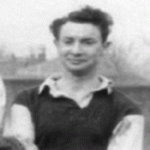
John ‘Chic’ Chandler (1945 to 2025)
It is with a heavy heart that I must inform you that John ‘Chic’ Chandler, an Eminent Old Camdenian and life long supporter of the club, passed away on 14th October 2025, aged 79 years, of complications associated with his Type 1 Diabetes.
John was born on 27th November 1945 and attended Holloway School from 1956 to 1963 where he enjoyed all forms of sport and excelled at his studies before going to University and gaining a BSc., MSc., and PhD – specialising in Entomology, which he fully utilised in his chosen career advising various governments on Pest Control projects. Mostly overseas in the third world Countries that included:- Tanzania, Keyna (where he met and married his wife), Sudan, Pakistan and Greece.
Eventually back to the UK where John worked with Southampton University to develop commercial pest control products, one of which was a non-toxic fly strip, widely used in theatre wardrobe departments to catch moths!
John’s younger brother Brian said, “When John was in the country he was a great supporter of the Old Camdenians, many friends some sadly not with us now. I have fond memories of playing soccer with him in some old boy games where he would often “rescue” me from some opposing old boy thug with no skills who had clattered me! Getting himself into trouble as a result, that was him all over”
Our most sincere condolences go to John’s wife; daughter Lisa; John’s four grandchildren; Brian and his family at this difficult time.
As soon as a date, time and place for John’s funeral is agreed I will post the information to members. Please watch this space.
Ray Rowe
Dereck was a very enthusiastic member of the Football and Social Club during the 1960’s and 1970’s. He was a real live wire and will be remembered for organizing a variety of social events at Burtonhole Lane, most of which were very well attended and some still talked about. he also produced a lively football club newsletter for some seasons. His commitment to the club was greatly appreciated and his friendly sociable nature will be greatly missed.
Dereck died in 2004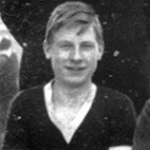
Francis Cheney was a member and gentleman of the Old School, both literally and metaphorically. His kindness, demeanour, manner and attitudes to dealing with people were exemplary in conduct and behaviour. Born at the outset of the First World War, he attended Holloway School from 1925 to 1932.
In 1938 he qualified as a solicitor. During the Second World War he joined the army and reached the rank of captain. After the war he continued to work for Vizards, a law firm in the City of London to become senior partner until his retirement in 1984 aged 70.
Francis attended 60 Old boys reunions, missing only one up to the time he moved to Suffolk just after 2000 to be near his daughter. He had been married for 63 years when his wife died in January 2007.
Francis was one of the club’s elders who helped to steer the purchase of the lease at Burton Hole Lane and was one of the original trustees. He transacted the legal documentation to the current trustees. He gave sane advice and wisdom to the Old Boys committee for many years and his presence is sadly missed. We extend our condolences to Liz and all the family.
Regret to announce the death of Gordon Clark.
Gordon joined the School straight after his demob from the RAF. He taught French and Latin and became a Deputy Head. The details of the funeral are as follows
Friday 25th. September at 2.30p.m at the Oakley Wood Crematorium North Chapel, CV33 9QP
No flowers by request. Collection for Alzheimer’s Society at end of service.
The Crematorium is situated adjacent to the B4100 Warwick – Banbury Rd. on the B4087 Wellesbourne Rd. It is close to Junction 13 on the M40 but it is only possible to leave at Junction 13 if you are travelling North. If you are travelling South it is only possible to leave at Junction 14 Full details can be found on the Crematorium Website.
If you are unable to attend and wish to pay a donation or send a message of condolence I shall be attending and will willingly pass them on. In view of the Postal chaos please send your messages via email. Also if you wish to contribute let me know and I will pay them on your behalf “pro tem”. Contact me at george.ives@btinternet.com.
George Ives
HOLLOWAY SCHOOL (1947 – 1978)
The Club was represented at Gordon Clarke’s funeral by the Chairman, the Secretary, Alf Mortimer and Reg Pritchett, who were joined by Brian Fletcher, a former Deputy Head at the School and a close colleague of Gordon. The service in 2009 was conducted by Gordon’s son-in-law who, in his address, called upon the many tributes received from former pupils. These were greatly appreciated by the family who were genuinely touched by the strength of the affection and respect they conveyed. The reception was held in the ‘Dirty Duck’ in Stratford, a favourite watering hole of Gordon’s and adjoining a cottage he once occupied. A very fitting farewell to a true gentleman and a never to be forgotten teacher and friend. A tribute to Gordon, prepared by Brian Fletcher, has been circulated (see below), which also draws upon the reminiscences from Old Camdenians
A PERSONAL MEMORY
I first met Gordon Clarke in September 1964, when I joined Holloway School as a teacher of mathematics to cover the absence through illness of Don Mansfield. I did not know at the time that my position would become permanent or that Gordon and I would develop an enduring friendship that would withstand many changes in the school’s character and personnel.
At first, I was in awe of this commanding and authoritative figure who strode the corridors of the Old Building with purpose and certainty. It was quite a long time before I was brave enough to call him Gordon and for a while I referred to him respectfully as Mr Clarke. But even when I dared to call him Gordon he retained my respect, for as a young teacher finding his way in a new London comprehensive school, he was a model for all that that was noble and dignified in the profession. As one of our friends and colleagues of the early seventies has written: ‘ He was strong, intelligent, funny and extremely principled – a great deputy head with enormous commitment to the School’.
Yes, Gordon rose through the ranks – eschewing bids for Headship because he felt he was too old – and for the final phase of his career was Deputy Head, serving with distinction and exceptional commitment. Heads came and went, but Gordon went on forever – the rock on which so many others depended, myself included. For my last three years at the school, Gordon and I were fellow deputy heads, but there was never any doubt about who was the senior! I incurred his wrath by leaving the School a year ahead of him because I had said I would stay until his retirement. But he forgave me and in his retirement years – all 31 of them – our friendship prospered and we met frequently in Stratford, a place he adored. It was his retreat from the hustle and bustle of London and there he pursued his love of theatre, walking, reading and bridge.
Gordon was a vigorous and energetic man, with an intellectually rigorous mind. He was always willing to embrace the new and this marked him out from his contemporaries. He relished a fresh challenge.
He managed to bypass all the major illnesses and remained healthy and wise, well into his nineties. He did suffer from a bad back from time to time and alarmed me more than once when I called on him in his study, only to find him hanging by his finger tips from the door frame or lying flat on his back to find relief from back spasms. But Gordon was unfailingly cheerful through it all and always believed in getting on with the job with minimum fuss. He was totally dependable and would never let you down. Countless students and colleagues over many years have good cause to be grateful for the durability of his friendship and the steadiness of his leadership.
As one Old Camdenian has written: ‘I know from my own experience that Gordon’s respect and care for his pupils extended past their school career and into adulthood. He is legend’
Another writes similarly: ‘He was always approachable and generous with his time and I remained in touch with him long after my school days.’
Yet another writes: ‘I believe I was the last Holloway boy he managed to coach through A level Latin and in my 42 years in newspapers, scarcely a day went by when I wasn’t reminded of the debt I owed to him for his kindness, patience and encouragement as a teacher’.
Gordon enjoys our enduring respect and affection. We shall miss him and we are all the poorer for his passing. We shall never forget him.
Whatever he was doing – taking boys on walking and cycling holidays, stirring up Red House to greater endeavours on the sports field, teaching Latin or French and at the very end of his career, mathematics – he did it with commitment and dedication. He did not measure his service. His belief in the school was total and he supported it, through good and changing times, with an unerring sense of what was right for the place. He was the school’s loyal servant.
He was also my very good friend and a friend to my family.
I last saw him at the beginning of this year and I could see that he was entering a place where I could not follow and initially I felt very sad. But, as I reflected on our long friendship, I realised how fortunate I had been to know him for so long and to enjoy so may good times together at work and at leisure.
Gordon has had a long and distinguished life and as tributes from friends and colleagues and Old Camdenians have shown, he has given so much to so many.
His legacy will endure.
As Richard Knight said: Vale magister optime, pax tecum, in pace recquiescas.
Brian Fletcher
Holloway School (1964 – 1977)
James taught German at the school between 1954 and 1971. He died in 1991.
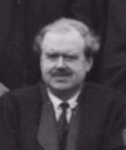
I would like to share my fond memories of a kind and gentle sportsman with whom I both battled and played alongside. As well as being a good footballer (we both represented London Grammar Schools), he was an excellent cricketer. Captain of the school First XL he was fine batsman at number 3 or 4. He was also Head Boy of our comprehensive school of more than 1200 boys. After a gap of nearly 40 years whilst I was overseas, I met up with him at an Old Camdenians dinner and the years just fell away as we picked up where we had left off, all those years ago. I am deeply saddened at his passing. RIP Paul, friend and companion.
Paul passed away on the 17th of August 2019.
John Chandler
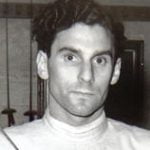
Arnold Ralph Cooperman was born in Stoke Newington on November 27th 1927, into a traditional Jewish family along with a brother and sister, and went on to attend Holloway School. He took up fencing in 1945 as part of his national service in the RAF as a physical training instructor.
Ralph as he was known in the fencing world won the British junior championships in foil and sabre in 1950 and 1951 respectively, and was three times British Champion in sabre in 1954, 1960 and 1961 and runner up in foil in 1953.
He was a medalist at the 1950, 1953 and 1969 Maccabiah Games. He also competed in sabre at the world championships on seven occasions from 1953 to 1966.
In open international sabre competitions he won bronze in The Hague in 1953, gold in Ostend and bronze in London in 1955, gold in Brussels and bronze in Noordwyck in 1958, gold in Amsterdam and silver in Ostend in 1959 and bronze in Paris in 1960.
Ralph competed on behalf of Great Britain in foil and sabre at the 1956 in Melbourne, and in Rome in the 1960 Summer Olympics and Tokyo in 1964.
He represented England and won a gold medal and two silver medals in the foil and sabre respectively at the 1954 British Empire & Commonwealth Games in Vancouver.
At the 1958 British Empire & Commonwealth Games in Cardiff Ralph won a gold and silver in the sabre events, and four years later at the 1962 British Empire & Commonwealth Games in Perth he won triple gold and a bronze medal in the foil (behind teammate Allan Jay). He won his 11th medal in total and 6th and 7th gold medals in both sabre and team sabre at the 1966 British Empire & Commonwealth Games in Kingston. Overall he won winning seven gold medals, three silver and one bronze medal.
Ralph married Shirley George in 1966 and was a qualified accountant who worked for various companies.
He was unfailingly kind and courteous. He coached wheelchair fencers in the early days of Stoke Mandeville Hospital. With his wife, Shirley, he was known for his hospitality. Other accomplishments included dancing and swimming.
Though suffering from severe Alzheimer’s in later life, he will be remembered for his sense of fun as well as his fencing skill and dash.
Ralph died in London on March 22nd 2009, aged 81 years old. RH
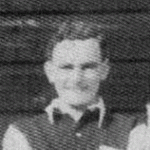
It is with deep sadness that we have to inform you of the loss of Alan who died in hospital on 23rd November 2020. The funeral will take place on Monday 14th December at 1.00 pm at the Marylebone Crematorium, East End Rd, East Finchley, London N2 0RZ. Covid-19 restrictions apply. Please contact Richard Brown at richnjo.brown@btinternet.com
Alan Cornelius attended Holloway School from 1946 to 1953. He died in hospital on 23rd November 2020. Those of you from the ‘Old School’ will remember with great affection this good sport who was good at sport, racing down the left wing on the top pitch at Bow Lane and the halcyon days that followed when the Old Camdenians were able to field 7 football teams in winter and three cricket sides in summer on a Saturday afternoon. Alan, with great sporting ability, was an automatic selection on the team sheets for both football and cricket first X1’s.
At school, he captained both the football and cricket teams: he excelled at running in 440-yard track events and represented the school at inter school athletic meetings. He used his speed to the full when on the football field. Playing on the left wing, he didn’t so much as dribble past the opposing right back; he would push the ball forward and race past the defender. Heavy full backs made him suffer when they weren’t able to match his pace and would attack his ankles.
Alan had a brief period as a semi-professional footballer for Enfield Town. Precise football records are not available, but as an established member during the period of a highly successful OC’s first Xl, he probably played over 250 games and scored more than 150 goals. During this time, he also won representative honours with the LOB league X1.
When he changed from shorts and top in winter to full whites for the summer game, his prowess and talent as a left-handed batsman in the upper order enabled the OC’s to reach respectable scores on many occasions. He didn’t hammer the red ball in the style of Ben Stokes but would stroke it more in the elegant manner of David Gower. He would use the pace from the fast bowler to glance the ball either side of the wicket past the wicket keeper or take a full stride down the pitch and with a full back lift and follow through reverse the direction of the ball back past the bowler where it would gather speed down the slope at Bow Lane to the boundary fence. He performed the left hander’s typical hook shot with assurance.
According to club cricket records, he played 307 games from 1951 to 1964, scored 6413 runs, including 2 centuries and 30 fifties. Occasionally, he was required to turn his arm over for a reward of 20 wickets and as the complete all-rounder, took a total of 138 catches.
Alan wasn’t a great social drinker, as some of us might have been at that time, but he joined many OC’s who would socialise and enjoy refreshments at the Archway Tavern before and after the game. Following National Service in the 50’s, we shared a number of cricket tours and several holidays together. One such holiday was with Brian ‘Ned’ Kelly to Mt Pilatus, Switzerland where we climbed to Kandersteg wearing our service boots.
Alan started work at BP in the City and remained an employee till he retired at the age of 50 in 1984. In September 1961 he married Jill and I was privileged to be his best man. The couple moved to Southgate. After Jill died in 2015, Alan’s health began to suffer. He was taken into hospital with a kidney infection and died a week later. Alan was well respected, likeable, even tempered and sincere. Our thoughts are with Paul, Alison and family to whom we send our condolences
Richard Brown
One remembers odd things that are themselves totally unimportant. We had an Alan at left wing and another Alan, me, at right wing. In what was to become a Spice Girls nomenclature later , we were named on the pitch as Alan C and Alan S. Perhaps the important aspect is that we do remember.”
Alan Shearn
It is with much sadness that we record the passing of one of our dearest and most respected masters. Theo Crabtree.
Theo was a dedicated teacher and colleague who cared, was kind, supportive and helpful. He began teaching at Holloway in the 1920s. During the war years he retained his quiet and dignified manner as he strived under difficult conditions, to maintain standards so that the school might return to good order at the end of the war. In 1947 Theo was Head of Modern languages (assisted by Al Ahier and Jock Adams) in a crowded staff room including Richard king and Bunny Griffith, Doc Atkinson, Bill Seitz and George Mangham. Theo was Blue House Master and invited new boy Gordon Clarke to join him. The House system was the basis of healthy competitive spirit with lots of fun and enjoyment., especially at Christmas.
He died in 1996.
One year Robert Pinker designed a coat of arms for Theo – a large tree embracing a monstrous crab. Theo Crabtree was respected and held in high esteem. He was never more enthusiastic than when the cricket season came round. (He was president of Southgate Cricket Club). He encouraged everyone to play and enjoy playing. He gave a great deal of commitment and was generous with is time and energy, often on a Saturday morning at Bow Lane. Paul Yates and Alan Cornelius were just two who benefited from his coaching.
“His life was gentle, and the elements
So mix’d in him that nature might stand up
And say to the world. This was a man”
